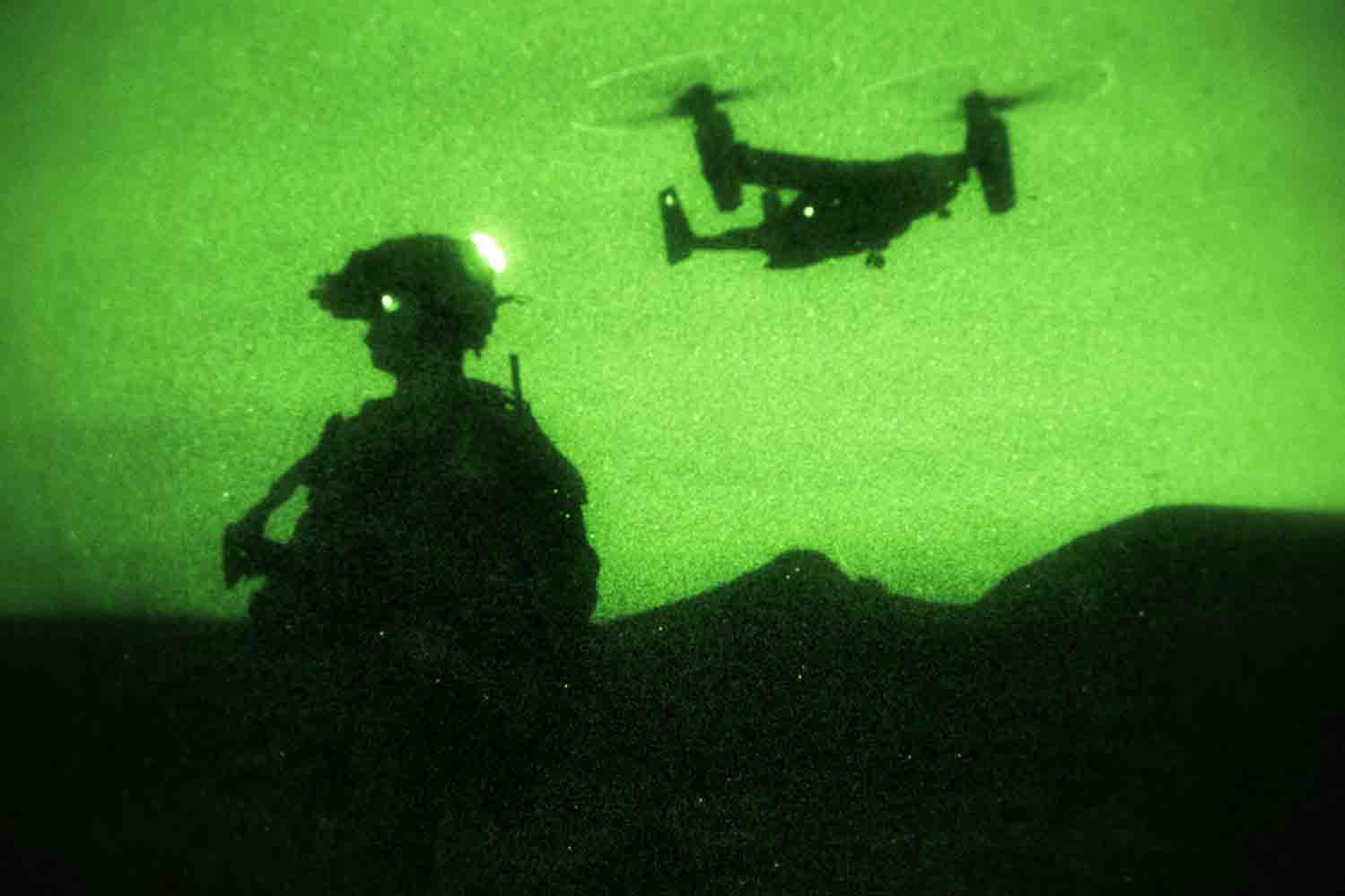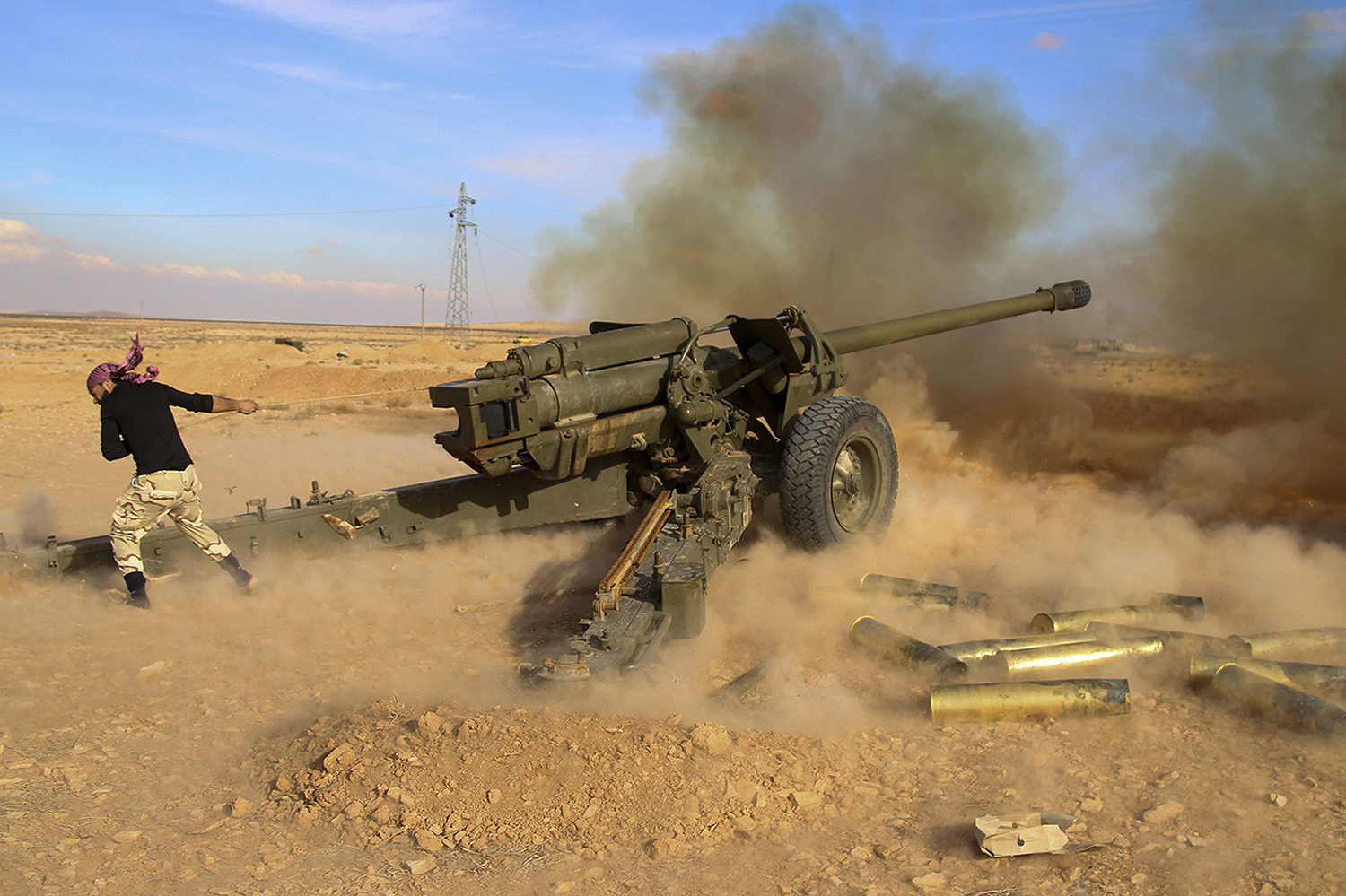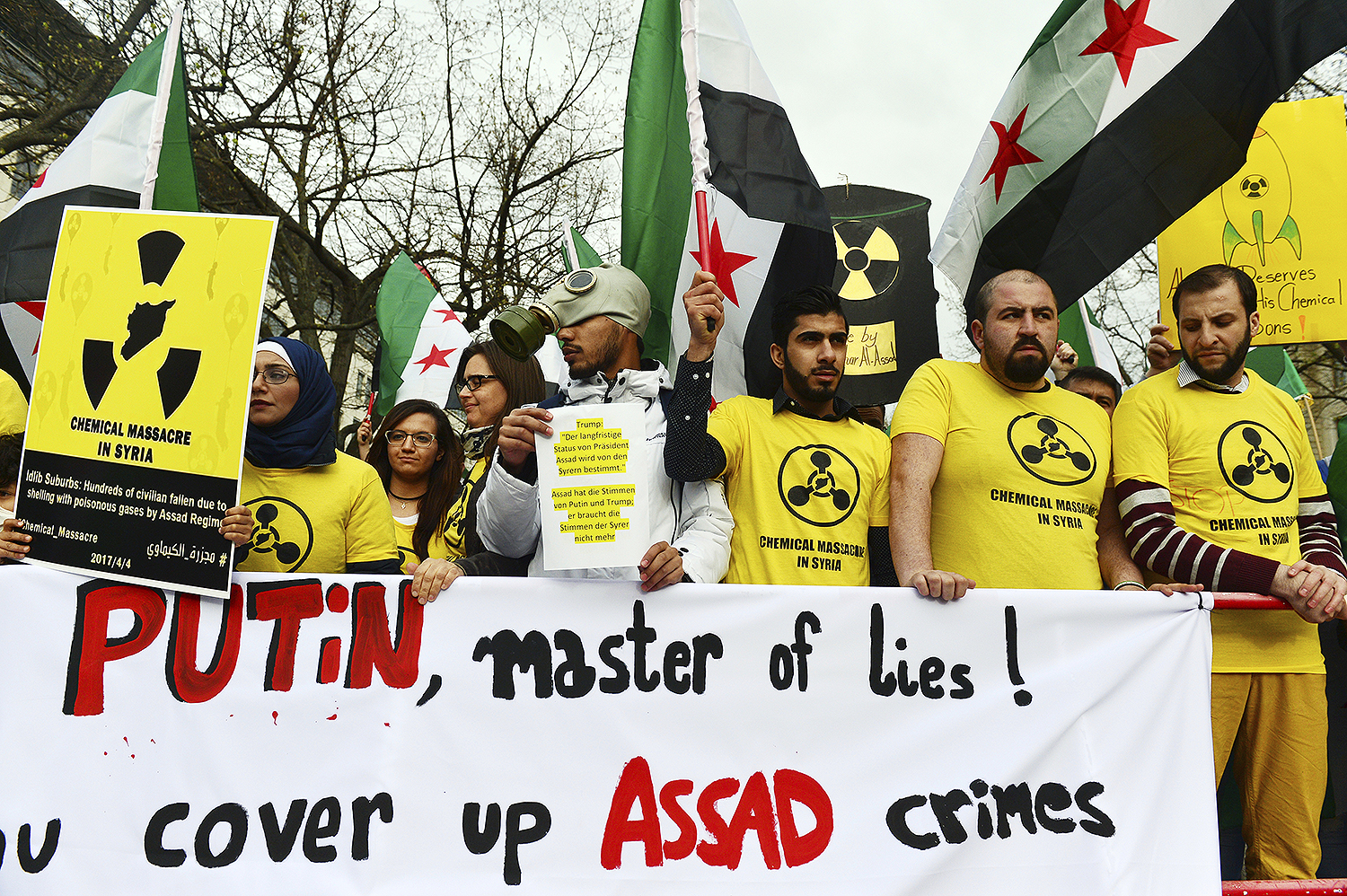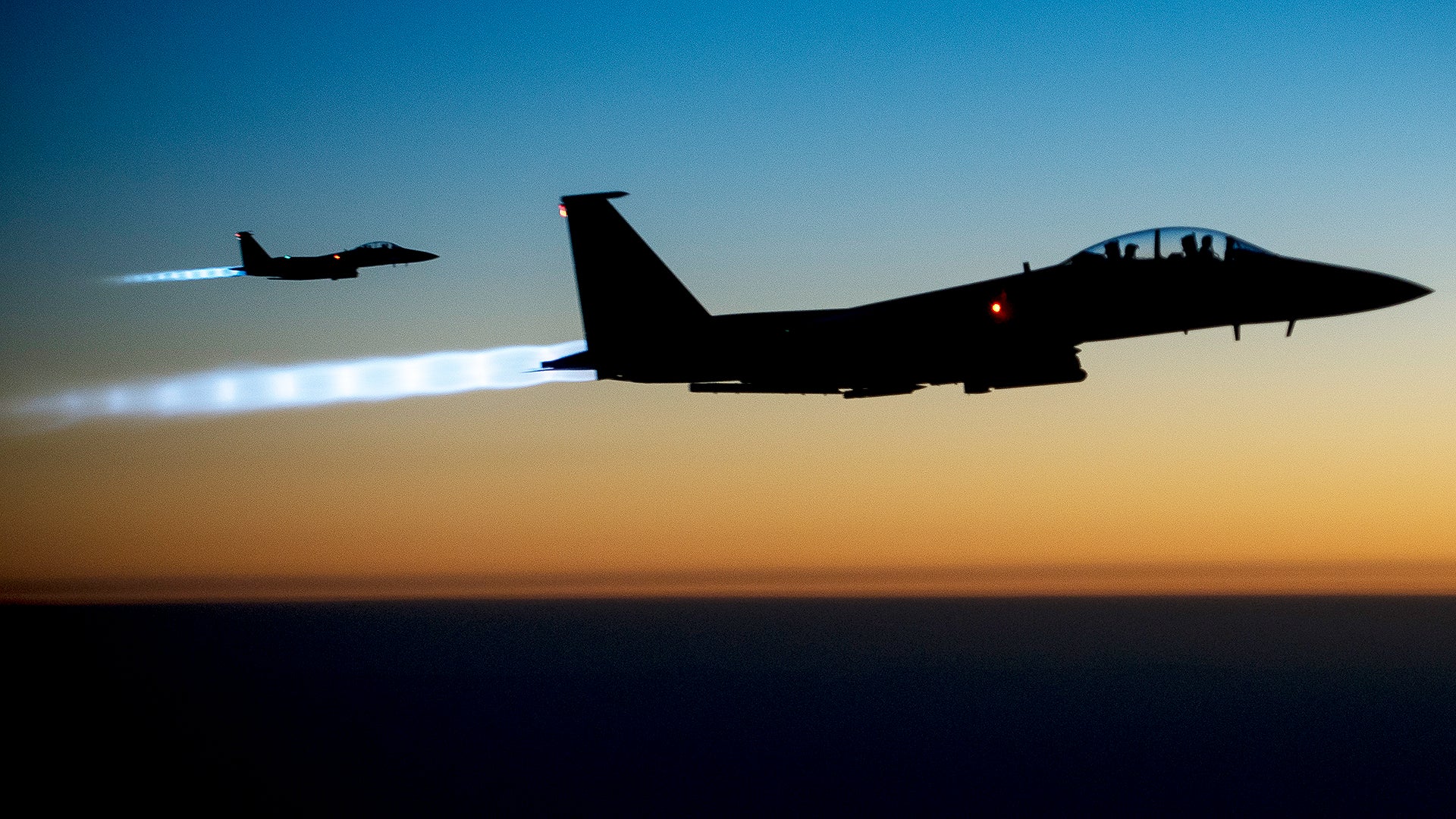The pictures are devastating, the accounts are even worse. The early morning aerial gas attack on the town of Khan Sheikhoun in Idlib Province, Syria, that killed 83 people and wounded over 150, has reverberated throughout the international community. Now, just a couple days after the Trump Administration seemed to turn away from the policy of regime change in Syria, the White House may be preparing to take military action against the Assad regime—which would be a first since the Syrian civil war began over six years ago. And although Assad is a miserable tyrant and war criminal, attacking him now is a terrible idea. Here’s why:
It’s all about destroying ISIS. So far, the US has successfully kept at bay a direct conflict with Assad’s forces through careful geopolitical and military maneuvering. The height of complication, and peril, seemed to occur just over a month ago, when US Rangers were suddenly deployed into the northern Syrian city of Manbij. Located west of the Euphrates River, the town was being held by US-backed Syrian Democratic Forces (SDF), which are made up primarily of Kurdish fighters—the same fighters that Turkey sees as a mortal foe. Turkish forces in Syria needed to travel through that city in order to move on to the ISIS capital of al Raqqa, which was at the time Ankara’s stated goal. In addition, it has long been Turkey’s other military goal as part of “Operation Euphrates Shield” to route Kurdish forces from positions west of the Euphrates River.
On top of that, Assad’s forces, which are backed by Iranian-controlled Hezbollah fighters and the Russians, were also on the outskirts of the city. The three-way showdown looked like it could have become a huge bloodbath and international geopolitical powder keg. But in the end, a mix of the genius blocking maneuver by US Rangers and diplomacy won out, and not only has Turkey stopped their eastern advance, they also have ended direct military incursion into Syria all together. Meanwhile, Assad’s forces’ attention on the city, as well as elsewhere in the country, have allowed the US and its local allies to pull off yet another key blocking maneuver.

The US leveraged its ability to vertically envelope an enemy area via helicopter assault, by striking south with its SDF troops, and seizing a key airfield and the al Tabqa dam just to the west of ISIS’s capital of al Raqqa. With indigenous troops and US Marine artillery already located north of the terror stronghold, this eastern location blocks the only other western approach to al Raqqa, and will likely be the scene of a major fire support and logistics hub as the operation to wipe ISIS from al Raqqa officially begins. It also largely blocks Assad’s forces from pushing east towards the ISIS stronghold.
These advances have just come in recent weeks, but they are also the product of years of engagement in Syria by US and coalition forces. The ability to move about the country in the air at will has been a massive help for the operation. Throngs of drones, helicopters, transports, surveillance, and fighter aircraft have benefited from a tacit agreement with Assad that they will not be fired upon as long as they do not threaten his own forces—especially his air defenses and air combat capabilities. This has been the reality over Syria since the US first executed airstrikes in the country in September of 2014.

Now, after these recent successes, and just as ISIS’s seat of power is in the coalition’s sights, the idea of attacking Assad and turning his air defenses against the coalition is just about as counterproductive as it gets. And doing so would come with extreme geopolitical peril.
First, you don’t just “knock out Assad’s air force.” This is a poor description of the air campaign that will be needed to truly neuter his aerial war fighting abilities, and even then Russia could just resupply him with deadlier equipment. It’s true that cratering Assad’s runways would keep his fixed-wing air force from flying temporarily, but that air force is a miserable hodgepodge of dated Soviet-era fighters and trainers. The main airborne weapons delivery system Assad’s forces prefer to use are helicopters, and the improvised “barrel bombs” that they chuck out the back of them. Helicopters don’t need runways and they can be dispersed throughout the countryside instead of being concentrated at a handful of airfields. Also, when it comes to chemical weapons, artillery shells can be just as effective as air dropped weapons. Finding and destroying every piece of large caliber artillery in Assad’s possession is an all but impossible task. As for where his chemical weapons are hidden, nobody seems to know.

Then there are Assad’s air defense capabilities, which will be turned against coalition aircraft if they were to attack. Many of them are installed at fixed positions, but others are road-mobile—such as the SA-6, SA-11 and highly modern Pantsir-S1—and far harder to find and destroy than their stationary counterparts. These systems pose the greatest threat to coalition air power as they can “pop up” unexpectedly at any time.
During a large air offensive against Assad’s aerial forces, everything from suppression of enemy air defenses (SEAD) fighters to high-end electronic warfare and cyber attack capabilities can be used to protect coalition aircraft, as well as leveraging America’s stealth combat aircraft and standoff weaponry. But the US still has a long road ahead in Syria, and those assets will not be able to protect the hundreds of sorties that fly over the country on a daily basis. By turning Assad’s air defense capabilities against the coalition, the fight against ISIS in that country will get much tougher, harder to sustain, more complex and far more expensive.
There is also the reality that Iran and their Hezbollah proxies are on the ground in Syria in support of the Assad regime. A direct attack on the Assad’s forces by US-led air power could result in a series of unintended consequences. For instance, Iran could order Hezbollah to attack Israel—a potential conflict that is already reaching a boiling point—or Iran could pull one of its own direct levels or power, such as threatening shipping in the Persian Gulf or Strait of Mandeb. If Hezbollah fighters die in the bombardment, Iran could make attacking US troops in Syria a high priority. The list goes on and on.

Maybe most importantly, you have the Russian wild card. If the White House decides to go after Assad’s air force and air defenses, among other war fighting capabilities, Russia could just say they won’t allow it and that they will defend Assad and his airspace. And the Russians have the ability to do just that, unless US forces are actually willing to attack Russian surface-to-air missile batteries, aircraft, and material. And even if the US decided to take that risk, it would not be without extreme peril. Russia has S-400 and S-300 batteries in western Syria, which range out far into the Mediterranean and deep into central Syrian airspace, where US aircraft operate now freely. They also have some of their most advanced fighter aircraft based at their airfield south of Latakia. Taking out those batteries would open up a huge geopolitical “Pandora’s Box,” and killing the Russians operating them would likely see the conflict explode in a way few are willing to realize.
The cold, hard truth is that the US had an opportune time to leave Assad’s aerial combat and air defense capabilities in rubble, but the Obama Administration failed to act. Yes, I am talking about the 44th President’s infamous “red line.” The first time Assad gassed his own people—a move the US said they would never let stand after watching the atrocities Saddam Hussein enacted on his own citizens—America should have vanquished not just Assad’s air force, SAM systems and gas sites, but also large portions of his war fighting capabilities. Much of this could have been done via standoff weaponry and there weren’t any US or coalition aircraft flying regularly over Syria at the time. Instead, Obama fumbled, and eventually took the Russian-brokered deal that supposedly removed all Assad’s nerve gas and the regime’s ability to build more. It seems like that deal was not as effective as touted, because Assad still clearly has nerve gas in his arsenal. The fact is some of us were talking about the need to take out Assad’s WMD stockpiles long before that deal was reached, a subject matter that largely was ignored by the mainstream media at the time.

Once Russia descended onto their newly gifted air base south of Latakia, Syria, in September of 2015, the option of militarily going after Assad and his war fighting capabilities without serious repercussions came to a rapid end. Russia’s grand blocking maneuver changed the game and has altered the outcome of the Syrian civil war dramatically ever since.
There is also the question of why Assad used gas again, and why on that particular target? It doesn’t make much sense. In fact, it puts his absolutely necessary relationship with Russia at risk, and invites massive strikes against his own regime. It also shows that he still retains chemical weapons capabilities, which he supposedly gave up nearly four years ago.
It almost seems like Assad is trying to internationalize the conflict even more than it already is. His recent firing on Israeli fighter aircraft who have hit Hezbollah weapons transfers in Syria for years was also peculiar. As was Damascus’s threats to shoot down any IAF jet over his territory and that his forces will rain down Scud missiles on Israel ports and military bases if the strikes continue. Obviously, bringing Israel into any conflict in that part of the world can result in fractured coalitions and rapid escalation. Although nothing can be said for certain, it is almost as if Assad is baiting the powers that be to change the conflict’s dynamic once again.

Regardless of Assad’s intent, if the US can’t strike at Syria’s air force or other war fighting abilities, then what should be done? First, Assad and his buddies in Moscow can hang in the court of public opinion. Seeing images of dozens of little kids gassed sure doesn’t help either of their images, and seeing that Russia not only brokered the gas removal deal, but that they also are known to hold extreme leverage over Assad, they can answer for his crimes and for their support of his regime.
In fact, there are signs that cracks in the Russian-Syrian relationship are beginning to emerge. Putin’s spokesman said today that Russia’s support for Assad is not unconditional and that they want a full investigation into the gas attack. This is not that surprising as it is key that Putin sells himself domestically as a bold terror fighter. Seeing images of civilians gassed at the hands of a regime that Russia has propped up at a substantial cost fundamentally darkens Putin’s “terror warrior” image. The reality is that Russia does not care about Assad; they care about their air base and strategic naval base in Syria that they now have basically an infinite lease on (a thank you gift from Assad for saving his regime from collapse) and their overall image as power brokers in the region. Assad can be replaced, and Russia could act to see it happen.

With all this in mind, the US should push as hard as it can to underline who Russia is supporting in Syria, and tie the crimes of Assad to the Kremlin on the world stage. Guilt by association if you will. What comes out of such a diplomatic offensive may not be the immediate satisfaction of revenge that some air strikes would provide, but the lasting impact could be far greater. In fact, this may have been one step too far for Assad, embarrassing his Moscow backers, and the wheels of power may already be in motion to oust the leader, saving Russia from yet another round of impending ire from the international community. Although Russia claims that the Syrian Air Force hit a terrorist chemical weapons depot, and that caused the release of the gas, nobody is buying it, and like other Russian explanations for events that do not benefit their image, their account is likely to change, if it hasn’t already.
Secretary of State Tillerson, who has spoken little to the press since taking office, said today that steps were underway within the international community to remove Assad from power. This omission came after Tillerson had a phone call with Russian Foreign Minister Sergei Lavrov about the attack. Tillerson is headed to Moscow next week, and it is very likely that some sort of roadmap to oust the tyrant once and for all will be discussed.

In the meantime, the US and its allies need to keep hyper-focus on their own interests in Syria—stamping out ISIS and specifically brining the de facto capital of their so called Islamic Caliphate in Raqqa crumbling to the ground one and for all. Anything else is a distraction and counter-productive to America’s immediate goals in the region.
In the end, Assad will get his well-deserved punishment, but now is not the time for that and executing some near-sighted and vengeful air campaign is not in the interest of the American people nor our allies. Above all that, such an act only invites what is already a horrifically bloody and complex conflict to become even more so and such an operation be the catalyst for a much wider conflict with far more terrifying stakes.
Update 7:50pm PST: The US has launched a Tomahawk missile attack on Shayrat Air Base in Syria. The story continues here.
Contact the author: Tyler@thedrive.com
